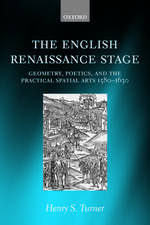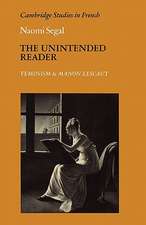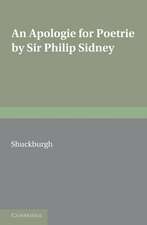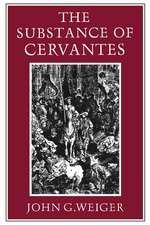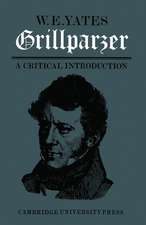Refiguring Authority: Studies in Romance Languages, cartea 39
Autor E. Michael Gerli, Michael E. Gerlien Limba Engleză Hardback – 13 dec 1995
Din seria Studies in Romance Languages
-
 Preț: 194.30 lei
Preț: 194.30 lei -
 Preț: 393.29 lei
Preț: 393.29 lei -
 Preț: 190.82 lei
Preț: 190.82 lei -
 Preț: 188.32 lei
Preț: 188.32 lei -
 Preț: 147.33 lei
Preț: 147.33 lei -
 Preț: 184.50 lei
Preț: 184.50 lei -
 Preț: 112.28 lei
Preț: 112.28 lei -
 Preț: 187.93 lei
Preț: 187.93 lei -
 Preț: 111.67 lei
Preț: 111.67 lei -
 Preț: 147.70 lei
Preț: 147.70 lei -
 Preț: 150.38 lei
Preț: 150.38 lei -
 Preț: 191.80 lei
Preț: 191.80 lei -
 Preț: 151.57 lei
Preț: 151.57 lei -
 Preț: 230.87 lei
Preț: 230.87 lei -
 Preț: 226.24 lei
Preț: 226.24 lei -
 Preț: 150.59 lei
Preț: 150.59 lei -
 Preț: 114.39 lei
Preț: 114.39 lei -
 Preț: 114.78 lei
Preț: 114.78 lei -
 Preț: 191.80 lei
Preț: 191.80 lei -
 Preț: 227.82 lei
Preț: 227.82 lei -
 Preț: 345.40 lei
Preț: 345.40 lei -
 Preț: 111.30 lei
Preț: 111.30 lei -
 Preț: 187.17 lei
Preț: 187.17 lei -
 Preț: 192.39 lei
Preț: 192.39 lei -
 Preț: 149.82 lei
Preț: 149.82 lei -
 Preț: 226.85 lei
Preț: 226.85 lei -
 Preț: 113.80 lei
Preț: 113.80 lei -
 Preț: 231.64 lei
Preț: 231.64 lei -
 Preț: 113.03 lei
Preț: 113.03 lei -
 Preț: 117.06 lei
Preț: 117.06 lei -
 Preț: 224.33 lei
Preț: 224.33 lei -
 Preț: 150.59 lei
Preț: 150.59 lei -
 Preț: 398.84 lei
Preț: 398.84 lei -
 Preț: 120.33 lei
Preț: 120.33 lei -
 Preț: 319.12 lei
Preț: 319.12 lei -
 Preț: 228.59 lei
Preț: 228.59 lei -
 Preț: 123.82 lei
Preț: 123.82 lei -
 Preț: 229.35 lei
Preț: 229.35 lei -
 Preț: 227.62 lei
Preț: 227.62 lei -
 Preț: 207.36 lei
Preț: 207.36 lei -
 Preț: 231.46 lei
Preț: 231.46 lei -
 Preț: 309.32 lei
Preț: 309.32 lei -
 Preț: 200.51 lei
Preț: 200.51 lei
Preț: 122.90 lei
Nou
Puncte Express: 184
Preț estimativ în valută:
23.52€ • 25.15$ • 19.61£
23.52€ • 25.15$ • 19.61£
Carte tipărită la comandă
Livrare economică 17 aprilie-01 mai
Preluare comenzi: 021 569.72.76
Specificații
ISBN-13: 9780813119229
ISBN-10: 0813119227
Pagini: 152
Dimensiuni: 160 x 237 x 19 mm
Greutate: 0.4 kg
Ediția:New.
Editura: University Press of Kentucky
Seria Studies in Romance Languages
ISBN-10: 0813119227
Pagini: 152
Dimensiuni: 160 x 237 x 19 mm
Greutate: 0.4 kg
Ediția:New.
Editura: University Press of Kentucky
Seria Studies in Romance Languages
Notă biografică
Textul de pe ultima copertă
In the prologue to Don Quixote, Cervantes maintains that his purpose in writing the work was to undo the pernicious moral and literary example of chivalric romances. Actually, argues E. Michael Gerli in this wide-ranging study, he often did much more. Cervantes and his contemporaries ceaselessly imitated one another - glossing works, dismembering and reconstructing them, writing for and against one another, while playing sophisticated games of literary one-upmanship. The result, says Gerli, is that literature in late Renaissance Spain was often more than a simple matter of source and imitation. It must be understood as a far more subtle, palimpsest-like process of forging endless series of texts from other texts, thus linking closely the practices of reading, writing, and rewriting. Like all major writers of the age, Cervantes was responding not just to specific literary traditions but to a broad range of texts and discourses. And he expected his well-read audience to recognize his sources and to appreciate their transformations. Modern literary theory has explicitly confirmed what Cervantes and his contemporaries intuitively knew - that reading and writing are closely linked dimensions of the literary enterprise. Other texts constitute an important source for understanding not only how Cervantes' works were composed but how these works were read, received, and rewritten by him and other writers of his age. Reading Cervantes and his contemporaries in this way enables us to comprehend the craft, wit, irony, and subtle conceit that lie at the heart of seventeenth-century Spanish literature.

